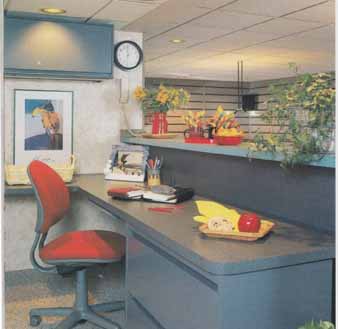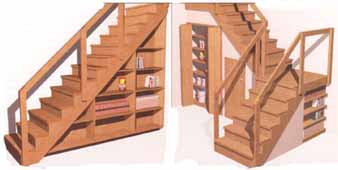When it comes to heavy-duty storage space, a basement is a natural. It’s a big concrete vault, often unfinished, generally out of sight; there’s no load limit to weight, as there is on a joist-supported floor; and gravity works in your favor: A basement is easier to fill than to unload.
Too often, however, an unfinished basement becomes a repository for large items: boxes of seasonal decorations and clothing, sports gear, or anything that gets in the way upstairs or outside. As with any other space in your home, tapping the potential of the basement means getting organized.
Utilities and moisture are two hurdles you must cross in the basement. Dealing with the first is a matter of organization. A wet basement may be harder to overcome.
Even before you moved in, your basement already was the home of the furnace, water heater, and water conditioner and probably was plumbed and wired for laundry facilities. While furnace fires, bursting water heaters, and overflowing washing machines are rare, they do happen. Don’t tinker with disaster. Keep stored items away from these units, either by walling off the areas or by designating them off-limits to storage.
Deal with any major moisture problems before using a basement for storage. If water leaks more than occasionally, call in an expert. The most extreme remedy is to excavate around the exterior, install drain tile, and reseal the foundation from the outside. It may be possible, however, to solve the problem by installing a sump pump.
Minor condensation problems and excess humidity, common to most basements in the summer, can be reduced by scrubbing the walls and floor to remove mildew, painting them with a waterproofing compound, then using a dehumidifier to keep the moisture level low.
Even if you correct these problems or have a dry basement, store items off the floor. Concrete tends to wick water and transfer it to flat permeable material that is in contact with it for extended periods. Cardboard boxes, for example, should never be stored directly on a concrete floor.
The projects shown here will help keep items off the floor to prevent damage. Just as with attics, if you plan to completely remodel an unfinished basement, work your storage strategies into the overall remodeling plan. If you’re going to convert the space into a recreation room, office, or bedroom, consider leaving one area unfinished to serve as your heavy-duty storage headquarters.

A walkout basement offers the advantage of
plentiful daylight. This one also benefits from a solid wall of storage.
The bottom tier of cabinets can hold games and toys. Upper shelves showcase
books.

Just as a kitchen service bar hides countertop
clutter from diners, a counter-topped half-wall shields this desk from a
basement family room.
USING SPACE UNDER STAIRWAYS

(left) Make use of the space under stairs,
whether you install simple shelves under unfinished stairs or finish off
the space with drywall and built-in shelves. Use this space as a long-term
pantry for canned goods, as a locker room for the sports equipment, or as
a library of books and games in a finished family room. If the stairway runs
down the middle of the basement, rather than against a wall, divide the under-stairs
space in half lengthwise so you have storage for different items on each
side. (right) Many basement s and provide an opportunity to build two storage
areas. Closing in the high end of the stairway creates closet space. Use
the space under the low stairs for shelves. When building basement projects,
always use pressure-treated lumber (which resists the ravages of moisture)
on the floor and against exterior walls. Attach it with masonry nails or
lag screws and shields. Other lumber can be common dimension pine, fir, or
plywood.

(left) Enclose the space under the stairs
completely if you want to keep items out of sight or dust free. Essentially
you’re building a closet under the stairs, but inside the doors, you
can have shelves rather than closet rods. You also can install any of the
closet organization systems described in the closet section. Divide a long
stairway into more than one enclosure. (right) A variation on the enclosed
concept is to build rolling bins out of plywood using basic bookshelf-building
techniques. The bins can be simple boxes into which you dump items or to which
you can add shelves. These are handy if you use the room for hobbies. Bins
with the correct supplies can be rolled right to your work area. Bins with
casters also are available commercially.